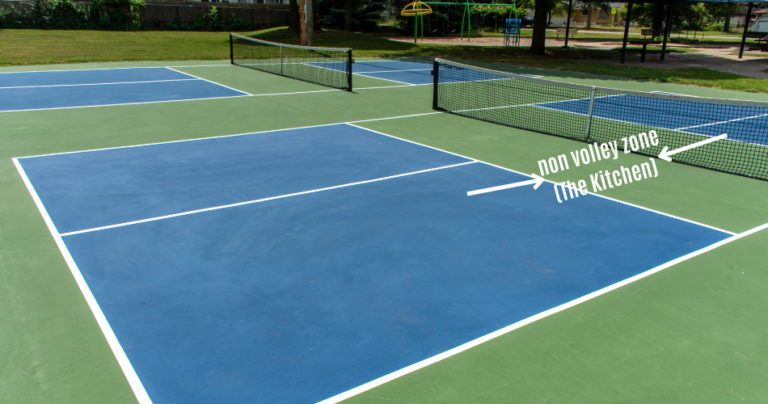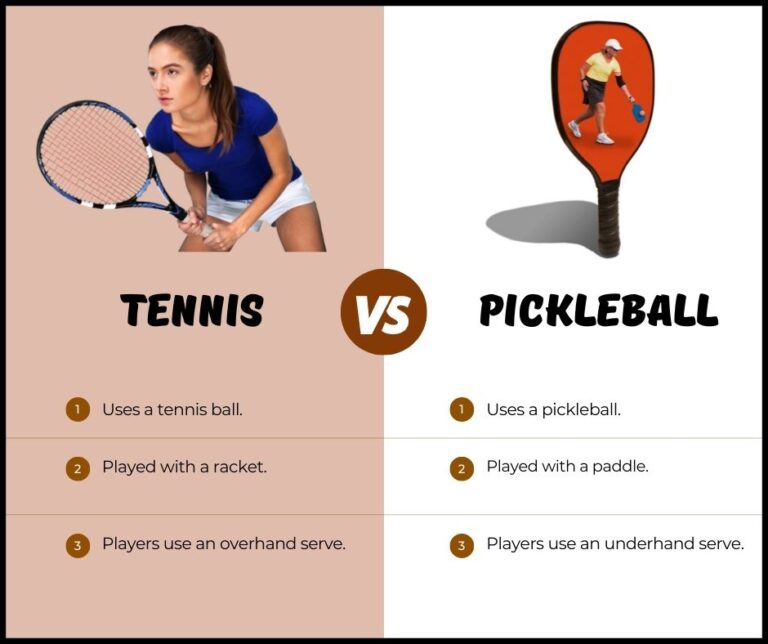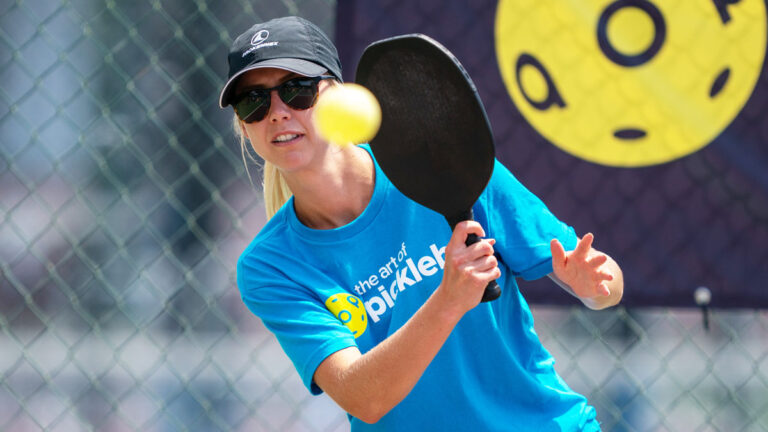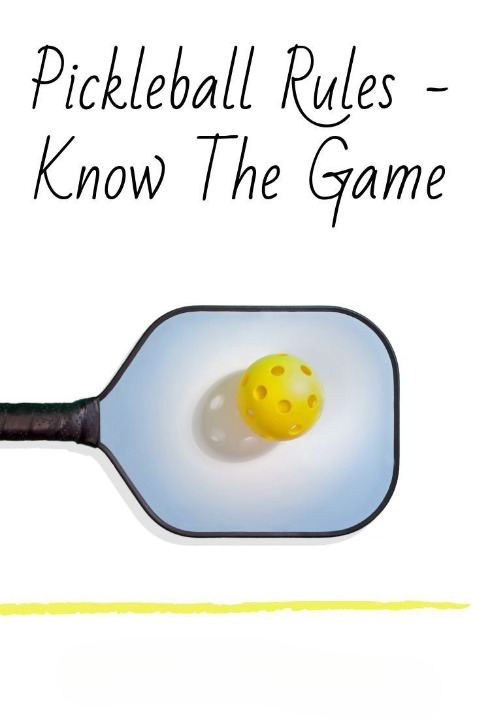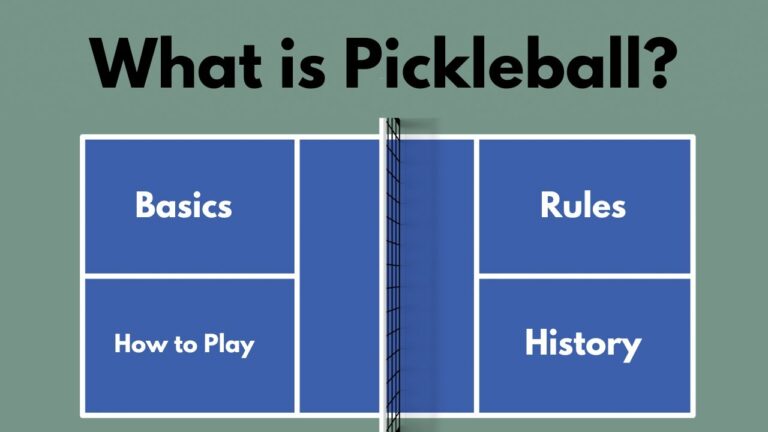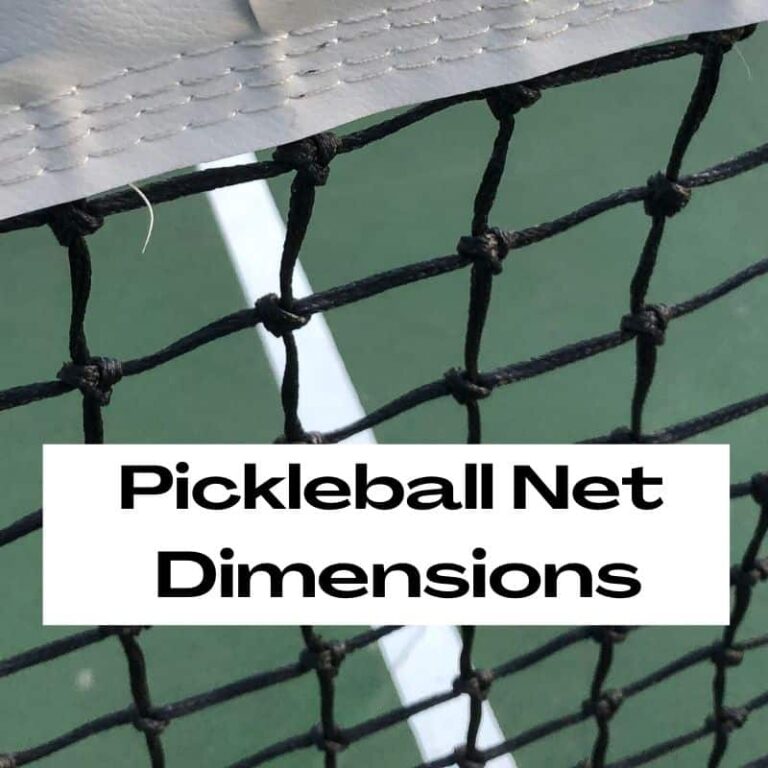What Are Pickleball Court Dimensions (Layout Guide)
Pickleball court dimensions may seem like a minor detail, but they play a crucial role in the game. Understanding the history and evolution of these dimensions can shed light on the sport’s development.
Proper dimensions are key, from the standardization of court sizes to the impact on gameplay and strategy. This article will explore the official pickleball court dimensions, compare them to other court sports, and discuss variations for different levels of play.
Discover the importance of pickleball court dimensions in the game and dive into the world of this sport.
Key Takeaways:
- Understanding pickleball court dimensions is crucial for players, coaches, and tournament organizers to ensure fair and safe gameplay.
- The dimensions of a pickleball court have evolved over time and are now standardized to ensure consistency in the sport.
- The size of the non-volley zone, net height, and boundary lines are important factors that affect gameplay and should be properly measured and maintained.
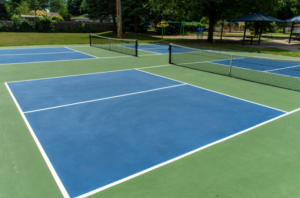
Importance of understanding pickleball court dimensions
Understanding pickleball court dimensions is crucial for players, tournament organizers, and facility managers to ensure fair play and adherence to regulations.
These dimensions dictate the size and layout of the court, influencing everything from the speed of gameplay to player movement and strategic positioning. By following the specified measurements for the court length, width, and net height, players can engage in matches that are consistent and equitable.
Adherence to official court dimensions is essential for safety, reducing the risk of player collisions and injuries during fast-paced rallies. This adherence also contributes to the overall experience, creating a professional and standardized environment for both recreational games and competitive tournaments.
History of Pickleball Court Dimensions
The history of pickleball court dimensions dates back to the origins of the sport, showcasing a journey of evolution and eventual standardization for consistency and competitive integrity.
Origins of pickleball
Pickleball, a unique blend of tennis, badminton, and table tennis, originated in the United States in the mid-1960s, created as a family-friendly sport suitable for all ages and skill levels.
The game was the brainchild of three friends – Joel Pritchard, Bill Bell, and Barney McCallum, who were seeking a way to keep their families entertained during a lazy summer afternoon.
The sport’s name, ‘pickleball’, is believed to have originated from the Pritchard family’s dog, Pickles, who would often chase after the wayward balls during their matches.
Having roots in Bainbridge Island, Washington, the sport quickly gained popularity throughout the country and beyond, becoming a staple in recreational facilities and community centers across various states.
With its easy-to-learn rules and compact court size, pickleball revolutionized the way people viewed racket sports, emphasizing fun and inclusivity above all else.
Evolution of court dimensions over time
The evolution of pickleball court dimensions has seen adjustments and refinements over the years, influenced by changes in gameplay styles, equipment technology, and the desire for standardization.
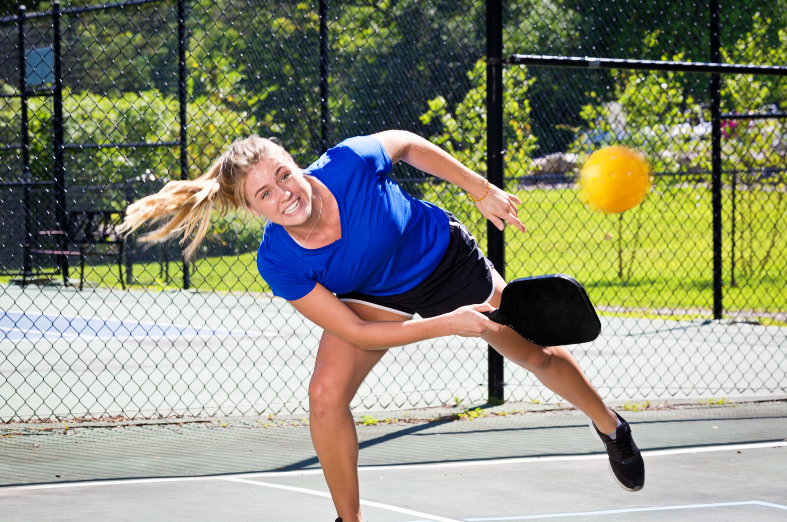
Initially, as pickleball gained popularity, players utilized existing tennis courts, often with reduced court sizes. As the sport developed its unique identity, specific court dimensions became essential for enhancing gameplay and fairness. The International Federation of Pickleball (IFP) formulated standardized court measurements to ensure consistency across tournaments and recreational play, emphasizing the importance of strategic placement and efficient movement. These changes aimed to create a balanced playing field for all skill levels and amplify the precision required for successful rallies and competitive matches.
Standardization of court dimensions
The standardization of pickleball court dimensions was a pivotal moment in the sport’s growth, aligning rules and specifications to ensure uniformity across tournaments and facilities worldwide.
Various organizations such as the International Federation of Pickleball (IFP) and the USAPA play a significant role in developing and maintaining these standard dimensions.
By establishing consistent measurements, players can practice and compete in a fair and predictable environment, enhancing the overall playing experience.
Officials benefit from streamlined regulations, improving the efficiency of matches and reducing disputes over court size.
Spectators also enjoy a more engaging viewing experience when court dimensions are standardized, as they can better understand the game and its strategies.
Official Pickleball Court Dimensions
Pickleball court dimensions encompass specific measurements for length, width, net height, playing area, and the non-volley zone, all detailed in the USA Pickleball rulebook for standardization and competitive fairness.
Length and width of the court
The length of a standard pickleball court is 44 feet, while the width is 20 feet, providing ample space for both singles and doubles play according to official regulations.
These dimensions are carefully designed to ensure fair gameplay and strategic maneuvering, with the 44-foot length offering sufficient room for baseline rallies in both singles and doubles matches. The 20-foot width allows players to cover the court efficiently while accommodating the fast-paced nature of pickleball. Whether you prefer the dynamic duels of singles play or the teamwork dynamics of doubles, the standardized court measurements cater to various player preferences. This standardized layout also enhances the competitive aspect of the game, ensuring consistency across different courts and venues.
Dimensions of the playing area
The playing area on a pickleball court includes the boundaries within the court lines, offering a designated space for gameplay that ensures fair play and accurate calls.
These boundaries play a crucial role in determining whether a shot is legal or out of bounds, making it imperative for players to have precise control over their shots and placement.
 Player movements within this area are strategic, as positioning oneself optimally relative to the court boundaries can mean the difference between a winning shot and a return by the opponents.
Player movements within this area are strategic, as positioning oneself optimally relative to the court boundaries can mean the difference between a winning shot and a return by the opponents.
Understanding the dimensions of the playing area and mastering the ability to control the ball within these boundaries are essential skills for successful pickleball gameplay.
Net height and specifications
The pickleball net is precisely regulated to a height of 36 inches at the sidelines and 34 inches at the center, ensuring consistency and visibility for players during serves and rallies.
These specific measurements are not arbitrary but are set to optimize the game experience. The height variance from the sidelines to the center allows for proper angling of shots, preventing the ball from hitting the net too frequently. This uniformity in net height also ensures fair play, as it provides a level playing field for all participants. Having a standardized net height reduces the chances of disputes during matches, promoting smooth gameplay without interruptions.
Non-volley zone (kitchen) dimensions
The non-volley zone, also known as the kitchen, has a depth of 7 feet from the net on both sides, restricting players from hitting volleys within this area to promote strategic play and fair competition.
By forcing players to stay out of the kitchen during volleys, the game dynamics of pickleball are significantly shaped. This rule adds a layer of complexity to shot selection and player strategies, compelling competitors to carefully consider their positioning on the court.
Players often use precise dinking shots near the kitchen line to draw opponents into the non-volley zone, setting up opportunities for more aggressive gameplay. The kitchen acts as a tactical barrier, requiring finesse and skill to maneuver around it effectively and gain an advantage in the match.
The strict regulations regarding the non-volley zone promote a balance between offensive and defensive plays, rewarding those who can master the art of placement and control in this crucial area of the court.
Boundary lines and their measurements
The boundary lines on a pickleball court serve as the markers for in-bounds and out-of-bounds areas, with specific measurements ensuring clarity and accuracy in gameplay decisions.
These lines are not merely painted boundaries; they are critical navigational tools that help players determine the legitimacy of shots and maintain correct positioning during gameplay. Boundary lines are essential in upholding the rules of the game, preventing disputes, and ensuring fair play. Whether players are serving, volleying, or defending, the precise demarcation of the court’s boundaries plays a pivotal role in determining the outcome of each point. Players must respect these lines to uphold the integrity and sportsmanship of the game.
What is the Minimum Size of a Pickleball Court?
The minimum size of a pickleball court is determined by specific dimensions outlined in the official regulations to ensure adequate playing space and fair competition.
What is the Maximum Size of a Pickleball Court?
The maximum size of a pickleball court is established to prevent excessive playing areas that could impact game dynamics, ensuring a balance between space utilization and competitive fairness.
When determining the dimensions of a pickleball court, several key considerations come into play. Outdoor and indoor courts may have varying size limitations due to available space and structural constraints. Factors such as player experience and skill level can influence the ideal court size for maximum enjoyment and fair competition. Adherence to official regulations set by organizations like the USA Pickleball ensures standardization and uniformity across different venues, promoting consistency in gameplay and player experience. It is crucial to strike a balance between providing ample playing space for maneuvering and maintaining a close enough proximity to enhance strategic gameplay and engagement.
Comparison with Other Court Sports
Comparing pickleball court dimensions with those of tennis courts and badminton highlights the unique characteristics and spatial requirements that differentiate these sports in terms of playing areas and net configurations.
Contrasting pickleball court dimensions with tennis courts
When comparing pickleball court dimensions to tennis courts, significant differences emerge in terms of size, net height, and playing surface, reflecting the unique requirements of each sport.
Pickleball courts are notably smaller, measuring 20 feet wide and 44 feet long, as opposed to the standard tennis court dimensions of 27 feet wide and 78 feet long. This compact size in pickleball courts allows for quicker rallies and intense gameplay due to the proximity of players across the court. The net height in pickleball is 36 inches at the sidelines and 34 inches at the center, which is lower compared to tennis courts where the net stands at 36 inches throughout.
Pickleball courts have a playing surface made of either concrete, asphalt, or wood, providing varied bounces and speeds, while tennis courts traditionally have a hard or clay surface, influencing the ball’s movement and player strategies. The contrasting court dimensions between pickleball and tennis offer diverse challenges and tactical considerations for players, contributing to the distinct appeal and dynamics of each sport.
Differences between pickleball and badminton court dimensions
The differences in court dimensions between pickleball and badminton underscore the distinct space requirements, net configurations, and playing styles that define the two sports’ court setups.
One of the major contrasts between pickleball and badminton courts lies in their respective sizes. A standard pickleball court measures 20 x 44 feet, which is notably smaller compared to a badminton court that spans 20 x 44 feet. This variance in dimensions directly impacts player movements and strategic considerations during gameplay.
In pickleball, the compact court necessitates quicker reflexes and more precise shots due to the reduced area for hitting the ball. On the other hand, the larger expanse of a badminton court allows for longer rallies and emphasizes agility and endurance amidst wider shot placements.
Importance of Proper Court Dimensions
Proper court dimensions play a vital role in shaping gameplay dynamics, tournament standards, and the overall player experience in pickleball, emphasizing the need for precision and adherence to regulations.
Impact on gameplay and strategy
The impact of court dimensions on pickleball gameplay and strategy is significant, influencing shot selections, player movements, and tactical decisions based on the available playing area and net configurations.
For instance, in a smaller court, players are forced to be more precise with their shots and footwork, as there is less room for error. On the contrary, larger courts provide more space for players to cover, requiring them to have better endurance and strategic positioning.
Player positioning becomes crucial in determining how effectively one can control the pace of the game and exploit their opponent’s weaknesses. The distance between the kitchen (non-volley zone) and the baseline affects where players can comfortably execute dinks, drops, or deep serves, impacting the flow of points and momentum shifts.
Role in tournament standards and regulations
Pickleball court dimensions serve as the cornerstone of tournament standards and regulations, ensuring consistency, fairness, and compliance with official guidelines to uphold the integrity of competitive play.
The regulation court size of 20 feet wide by 44 feet long for doubles and 20 feet wide by 22 feet long for singles ensures a level playing field for all participants.
- These dimensions dictate the boundaries within which players must compete, influencing their strategies, footwork, and shot placements.
- Accurate court measurements are crucial for match officiating, ensuring calls are made correctly based on the established boundaries.
- For tournament management, adherence to these dimensions streamlines court setup, scheduling, and overall event organization.
Variat ions and Adaptations
ions and Adaptations
Exploring variations and adaptations in pickleball court dimensions reveals tailored setups for different levels of play, alternative configurations for limited spaces, and customizations to suit specific player preferences.
Modified court dimensions for different levels of play
Modified court dimensions cater to different levels of play, offering tailored setups for beginners, intermediate players, and advanced competitors to adjust court size and specifications accordingly.
Adapting court setups based on player skill levels ensures a more enjoyable and competitive game experience. Beginners benefit from smaller court sizes, allowing them to focus on developing their fundamental skills and strategies.
Intermediate players may require a standard court size to enhance their gameplay and transition to a more challenging level. Advanced competitors, on the other hand, thrive in larger court dimensions, which test their agility, reflexes, and strategic decision-making.
Challenges arise in maintaining consistent court dimensions across different facilities and ensuring fair play for all players. Careful consideration must be given to factors like space availability, safety concerns, and maintaining the integrity of the game.
Alternative court setups for limited space or unconventional locations
Alternative court setups provide creative solutions for limited space or unconventional locations, enabling pickleball enthusiasts to enjoy the sport in diverse environments with custom configurations and adaptations.
In these settings, players and designers often innovate using versatile techniques to establish playable courts within unusual parameters. The flexibility to modify court dimensions and boundaries allows for tailoring the playing area to fit the available space while maintaining the essence of the game. Adapting to unique environments, such as urban rooftops or repurposed warehouses, poses interesting challenges that enrich the playing experience and foster a spirit of ingenuity among participants.
Customizations for specific needs or preferences
Customizing court dimensions allows players to tailor the playing area to their specific needs or preferences, fostering a personalized experience that enhances comfort, gameplay dynamics, and overall enjoyment of the sport.
Players who customize court dimensions in pickleball have the advantage of adjusting the distance between the kitchen line and baseline based on their playstyle, adding a strategic element to their game. By having the flexibility to modify court dimensions, players can fine-tune angles and positions, allowing for a more precise and tailored gameplay experience. This level of customization not only accommodates individual preferences but also promotes skill development and fosters a deeper connection to the game.
Frequently Asked Questions
What are the official dimensions of a pickleball court?
The official dimensions of a pickleball court are 20 feet wide by 44 feet long. This is the same size as a doubles badminton court.
Can a pickleball court be smaller than the official dimensions?
Yes, a pickleball court can be made smaller for recreational play or if space is limited. However, for official tournaments and competitions, the court must meet the standard dimensions.
What materials can be used to make a pickleball court?
A pickleball court can be made of various materials, including concrete, asphalt, or even clay. It is important to choose a material that is durable and provides good traction for players.
What is the recommended surface for a pickleball court?
The recommended surface for a pickleball court is a hard surface, such as concrete or asphalt. This provides a consistent bounce for the ball and allows players to move quickly and safely.
Are there any specific markings on a pickleball court?
Yes, a pickleball court has specific markings that must be present for official play. This includes a centerline, baseline, and sidelines, as well as a non-volley zone line (aka the “kitchen”).
How much space should be left around a pickleball court?
Ideally, there should be at least 10 feet of space around the perimeter of a pickleball court. This allows players to move freely and reduces the risk of collisions with surrounding obstacles.

